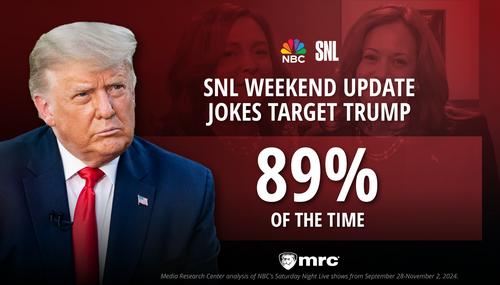Yesterday's news that the economy added 248,000 payroll jobs, while the official unemployment rate dropped to 5.9 percent, generated the expected hosannahs from much of the establishment press.
One utterly predictable such writeup came from the Associated Press. The headline at Christopher Rugaber's report, "SURGE OF HIRING CUTS US JOBLESS RATE TO 5.9 PCT," utterly ignored the fact that much of the 0.2-point drop was attributable to 97,000 Americans leaving the workforce (the official rate would not have changed at all from August if a still-unacceptable 100,000 people had instead entered the workforce). The most troubling aspect of Rugaber's dispatch was how he shielded the Federal Reserve and left-dominated economics community from its relatively recent irresponsible decision to accept an unacceptable benchmark as the best the economy can do.
The particular paragraph involved reads as follows:
The jobless rate now stands at the lowest level since July 2008, in the middle of the Great Recession, and is getting close to the roughly 5.5 percent that the Federal Reserve considers consistent with a healthy economy.
Rugaber used "healthy economy" instead of "full employment." His use of "healthy economy" obscures the fact that policymakers will be satisfied if the economy's unemployment gets to a level many of the same people would have considered appalling not all that long ago.
What follows are excerpts from a recent column posted at my home blog. It runs down the history of full employment, explaining how utterly absurd the "new normal" definition of 5.5 percent really is (links are in original; bolds are mine):
... Full employment is supposed to occur when “all … who want to work and are allowed to work are able to find employment.”
... What unemployment rate represents full employment? The architects of the Humphrey–Hawkins Full Employment Act of 1978 thought it should be 4 percent for Americans age 16 and over. That benchmark is what Richard Nixon used when presenting “full employment” budgets during much of his time in office.
... Forty years later, communications have improved tremendously. Unfilled job listings are available within seconds at any number of web sites attempting to match employees with employers. Applicants send resumes online instead of through the mail. One would therefore expect that the full-employment unemployment rate would have fallen, or at the very least remained the same.
... on September 4 ... on the ADP Employment Report conference call ... economist Mark Zandi, the report’s overseer, told his audience that he expects that the economy will continue to generate 200,000 or more private-sector jobs each month as far as the eye can see, and that this serendipitous consistency will bring the U.S. economy to full employment by the end of 2016.
... when the call opened up for questions, I asked him what he thought the unemployment rate would be at the end of 2016 when we hit full-employment nirvana.
I was stunned at the answer: 5.5 percent.
... When I mentioned that his full-employment unemployment rate was quite a bit higher than I was used to seeing by about 1.5 percentage points, Zandi went further into the land of the absurd. He asserted that full employment was commonly regarded as 5 percent last decade — this 2007 article in the New York Times confirms that — but that the economic damage caused by the recession had upwardly moved that standard to 5.5 percent.
In other words, it’s (George W.) Bush’s fault — apparently forever — that the rate is now a half-point higher.
So, as if by magic, the full-employment bar has been lowered to a 5.5 percent unemployment rate. This has occurred despite substantial portions of the past 17 years having an unemployment rate of 5.0 percent or lower, and despite the fact that the Obama administration's own 2009 stimulus plan prediction graph projected that unemployment rate would drop to 5.0 percent — by the middle of 2013 — when its full wonders took effect. And there's really no good reason why it should ever have been raised from the 4 percent rate used several decades ago.
Rugaber knows that 5.5 percent is the economics community's new definition of "full employment." I know that because he attended the conference call described in my column.
I should also note that I have recently come across anecdotal information leading me to believe that the official unemployment rate is likely understated, because many of those who are considered "not in the labor force" should be considered as really in the labor force — and unemployed — even under the Labor Department's own definitions.
The idea that what the nation's job market is within striking distance of being "consistent with a healthy economy" is clearly misleading, insulting — and dishonestly orchestrated.
Cross-posted at BizzyBlog.com.




